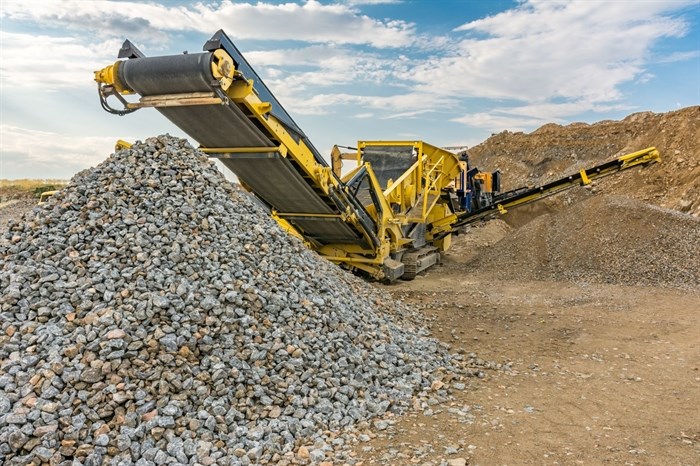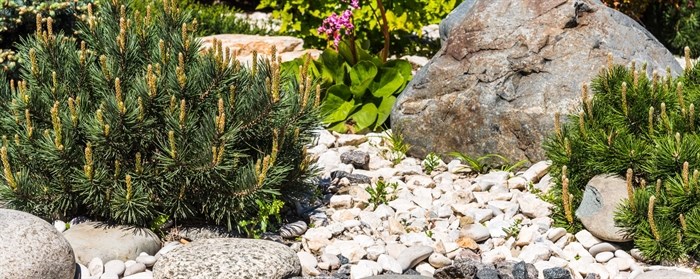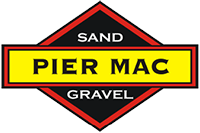
(INFOTEL MULTIMEDIA / iNFOnews.ca)
August 10, 2020 - 8:00 AM
Aggregate – Commercial Uses
Construction aggregate – gravel, crushed stone and sand – is the most mined material in the world. Given this fact, sand and gravel is all around us, under our feet in sidewalks, in the roads we drive on and even on our golf courses (we all love those sand traps). Sand and gravel are used to complete civil engineering projects, road building, dams and concrete. Aggregates in concrete reduce shrinkage and give body as a filler material. In fact, more aggregate in your concrete can mean a higher quality building material and is the key to strength and stability. Road building is more technical than commonly known as the bottom layer consists of coarse and fine crushed stone and sand to achieve load-bearing capacity and absorb vibration caused by traffic. Frost resistant layers of sand and gravel conduct water away form the upper pavement layers to reduce the stresses caused by water expansion and freezing. Asphalt paving and compaction completes the project. Road maintenance throughout the winter months calls for plowing and sanding to keep drivers safe on the road.
Sand for traps (bunkers) on golf courses can be hauled in from local quarries after being manufactured by crushing stone or dug from natural deposits. This specialty sand has playability qualities such as consistency and appropriate softness. Good bunker sand resists compression so golf balls are not buried and doesn’t pack too tightly when it gets wet under sprinklers or heavy rainfall. Most golfers like a soft white, or, clean looking sand that will not cause glare problems on a sunny day.
Aggregate – Residential Uses
Specialized aggregate is used in landscape design from decorative xeriscapes to rock walls and terracing, but there are more uses for sand and gravel than making backyards gorgeous.
Xeriscape Rock: Locally available crushed rock includes blue granite, brown granite, black basalt, and pink shale. Xeriscapes are the new trend in landscaping, as they conserve water, are virtually maintenance free, and provide eco-friendly solutions by negating the use of lawn and weed herbicides, fungicides and insecticides.

(ADOBE STOCK PHOTO / iNFOnews.ca)
Beach Sand: Imagine a private beach of pink sand. If you’ve traveled extensively, there’s no doubt you’ve seen one in the Bahamas, Indonesia, Italy or Bermuda. These beaches get their “pinkness” from crushed shells, but in the Okanagan, it’s possible to have an unusual sand beach coloured not with seashell sediment, but with pink shale crushed at two of our local quarries – Pier Mac’s Kelowna and Oyama pits. If you view online photo galleries of Ellison Provincial Park near Vernon, you can see the preternatural colours of our local beaches. Want one of your own? Give Pier Mac a call.
Rip Rap is rock used to protect shorelines, stream beds and bridge abutments against wave erosion. Valuable throughout the Okanagan, rip rap (also called shot rock) protects against erosion caused by seasonal high water and recreational wave action. Soil bioengineering includes the implementation of vegetated rip rap to create riparian habitat for fish, invertebrates and water plants and is especially useful for stream bank protection.
Other residential construction uses for sand:
• Bedding Sand
• Septic System Sand
• Basement Fill
• Radon Sand
So, next time you drive past a gravel pit, you may think of all the amazing natural products available right here in the sunny Okanagan, and how to put them to use.
Pier Mac Sand & Gravel has been in business for more than 30 years and is a prominent, local supplier of aggregate and landscape rock. Between its two locations, Oyama and Kelowna, Pier Mac provides in excess of 2000,000 metric tonnes of aggregate and landscape rock per year to the local market place.
Sponsored By 
News from © iNFOTEL MULTIMEDIA, 2020